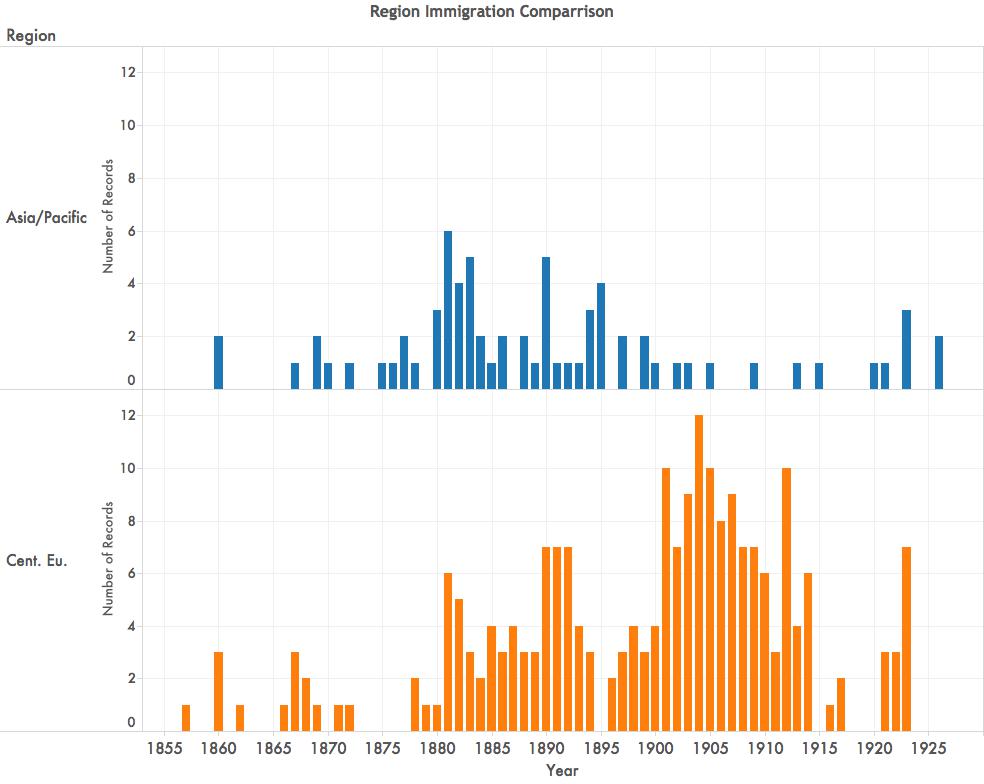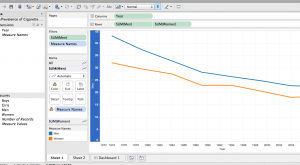This week before Spring Break, I was fortunate enough to get put on a new project coming out of the History Department. Working with Dr. Marni Davis, a team of SIFs and I are helping Marni to organize, visualize, and present her data on immigrants to Atlanta. We are beginning with data in the late 1800’s, and working up to the present. Currently, we have a lot of data up to about 1930, which is what I have been working with.
To begin, Marni supplied us with a spreadsheet of data with about 1600 entries on immigrants. These entries have data points such as name, birthdate, port entry city, date of immigration into Atlanta, date of naturalization, country of origin, address in Atlanta when applying for citizenship, and so on. Because I have experience with Tableau (a program which can produce beautiful data visualizations), Marni asked me to take some of this data and create charts that we could put up on her new GSU sites website dedicated to the Immigrants ATL project.
To begin, I decided to try and create a bit of a story that showed very simple data. For example, in the first figure, I show the m/f immigration difference, where you can see that men immigrated to Atlanta 100x more than women in this period.
In the next figure, you can see a comparison between when Asian/Pacific peoples were immigrating into Atlanta, versus when Central Europeans were. Additionally, you can see that there were far more Central Europeans immigrating to Atlanta than there were Asians.
The visualizations are really wonderful in that they make the data much easier to mentally process and compare, and they will be easy to present in any venue. Further, we can arrange any data visualization into a kind of story that we want the data to tell.
Currently we are working to create more graphs like you see above, but also to incorporate some maps that show data such as average age of immigrants into Atlanta from various regions, countries, and cities.
While these visualizations are gorgeous, and not difficult to make, there are some issues that arise to complicate matters. For example, there is not a year of entry for absolutely every immigrant to Atlanta. In order to create the graphs, I have to omit whole people who may only be missing one piece of data. Further, I learned the hard way, that Tableau does not read the formulas that we make in Excel. I had a lot of loading issues and eventually found that Tableau is set up to do my computing. After several hours of trying to load, visiting the Tableau sub-reddit, and doing a lot of Googling, that I could subtract the Immigration year from the Naturalization year right in the graph.
Next, we are going to build out more visualizations, meet with the rest of the team to see what they are working on, and hopefully create a really robust and face-smackingly wonderful set of data that Marni can present in any venue easily as she works to collect and manage all this data.





